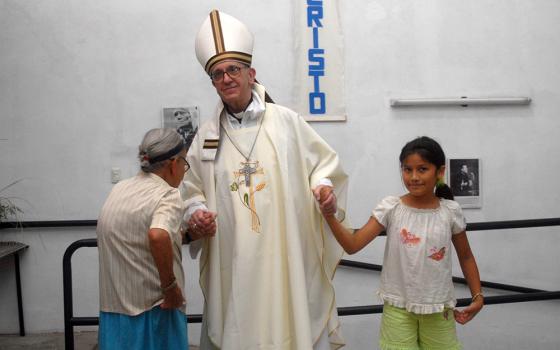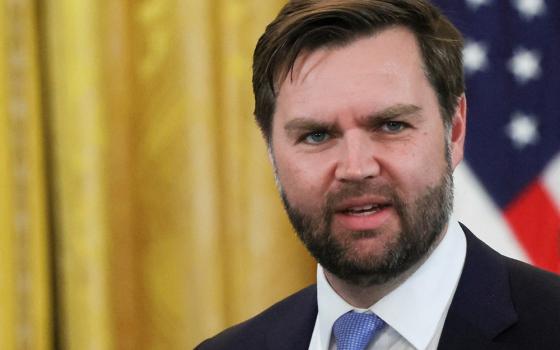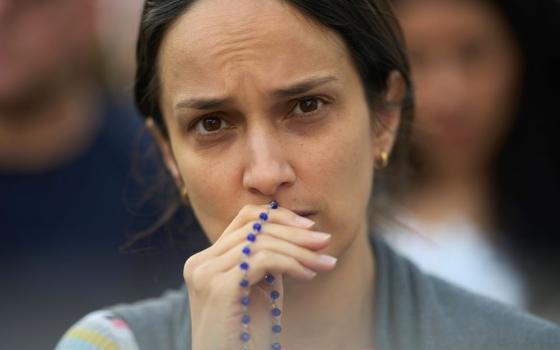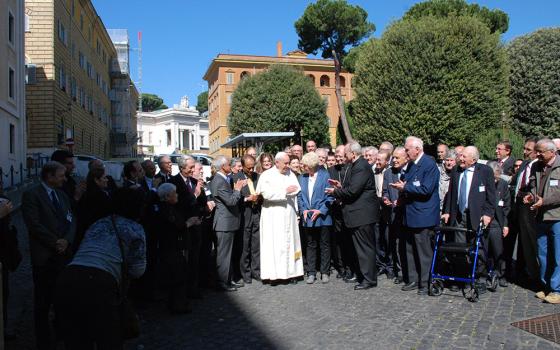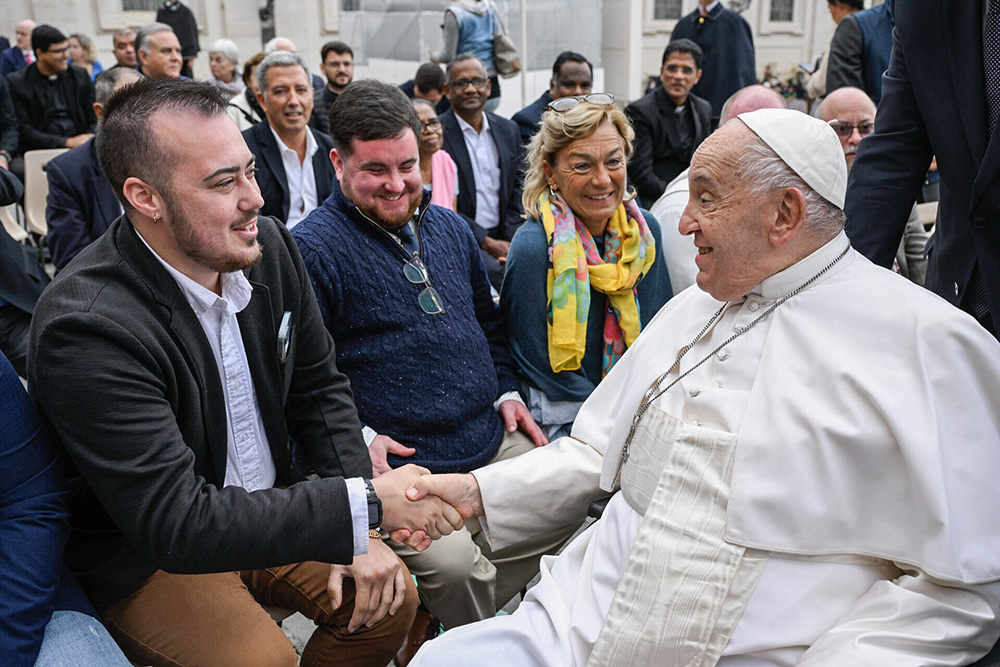
On Oct. 23, 2024, Maxwell Kuzma meets Pope Francis after a general audience as part of a group of transgender Catholic men gathered through Outreach, a ministry to LGBTQ Catholics. (Courtesy of Outreach)
When I met Pope Francis last fall in St. Peter's Square, it was not only the experience of a lifetime for me personally, but an encounter that is now part of Francis' legacy of pastoral care for the LGBTQ community.
Choosing to live as my true self, a transgender Catholic man, has sadly meant losing many friends and even a few family members. But meeting Francis, getting to introduce myself to him in Spanish as a transgender Catholic and receiving warmth and welcome from him in response, was a profound moment of validation. I might have a stigmatized social identity, but the fullness of who I am still belongs in the Catholic Church. The pope himself said so.
My experience of meeting Francis is certainly rare, but the impact he has had on me is not. Many LGBTQ people feel this way — even if they aren't Catholic. Such friends and relatives have remarked to me on the pope's warmth and openness to all, saying they long for more leaders with his compassion.
His papacy hasn't been all rainbows and butterflies, though. Trans and intersex people in particular were deeply disappointed with the release of Dignitas Infinitas, a 2024 Vatican document that alleged a lack of consensus among medical experts about transgender identity and effectively erased the intersex experience through reductive and harmful language. Though not directly from the pope's lips, these blunders align with how outspoken Francis himself was against "gender ideology."
Still, the pope lived beyond the boundaries of culture war. In doing so, he expanded the horizon of what it means to be a queer Catholic today, positioning the church more firmly in the pastoral example of Jesus, who turned away no one.
Advertisement
Francis did this through a local ministry for transgender sex workers in Rome, who enjoyed VIP seats in the papal general audiences and for whom he arranged vaccinations during the COVID-19 pandemic; through his regular meetings and listening sessions with members of the LGBTQ community; and through his public letters of support to LGBTQ Catholic ministries such as New Ways Ministries and Outreach.
Francis' gestures were not merely symbolic, they were incarnational. They reflected a theology rooted not in rigid ideology but in encounter. In a church that too often treats queer and trans lives as abstract problems to be solved, Francis instead treated us as people to be loved.
This, I believe, is the heart of his legacy: a commitment to presence, even when doctrine failed to follow.
It's a scary time to be transgender in many parts of the world, and Donald Trump's America is no exception. In this fragile moment, the death of Francis feels like the loss of a rare source of moral complexity in a world increasingly divided by cruelty and fear.
U.S. Catholics who are trans deserve to have our bishops fight for our safety and dignity — even if they, like Francis, don't fully understand our experience. But instead, the U.S. bishops would rather double down on complementarianism and exclusion.
Francis' legacy with LGBTQ people mirrors the example of Jesus: Francis was not afraid to be seen with us. He was not afraid to be present with us, reaching out his hand and holding eye contact with us as fellow members of the body of Christ.
May the next pope not only follow his example, but go further in picking up the threads of compassion that Francis began to weave, turning them into lasting change.

